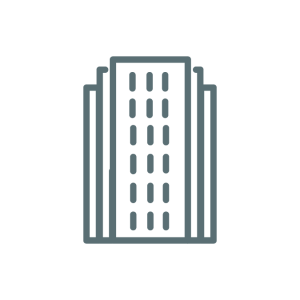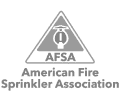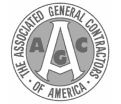Fire Pump Sizing and Selection
If you’ve been paying any attention to our blog, you already know how important it is to have a working, well-maintained fire sprinkler system in your building. The most important thing you can do for your fire sprinkler system is have a fire pump big enough to support the whole building. After all, a fire pump that can’t get your sprinkler the water it needs is not much better than having no sprinkler at all!
Calculating Pump GPM
Fire pumps are sized according to how much pressure they need, measured in gallons per minute (GPM). There are ways to calculate pump GPM: the standpipe method and the sprinkler area calculation method.
Standpipe Method
A standpipe is a system of piping that firefighters can hook up their hoses to help knock back fires in your building. The standpipe method is governed by NFPA 14, Standard for the Installation of Standpipes and Hose Systems which states that the first standpipe you install in your building requires 500gpm, with each additional standpipe requiring 250gpm up to a maximum of 1000gpm. This is a good method for smaller buildings, but it becomes a problem when a large building requires multiple standpipes.
Sprinkler Area Calculations
Sprinkler area calculations are much more involved, but are the best way to size a fire sprinkler system in a large building. To perform sprinkler area calculations, first you need to know the sprinkler hazard classifications of a building and its contents – this will help you determine the design density. Sprinkler hazard classifications are defined as follows:
- Light hazard – low quantity of flammable materials, low heat release (churches, hospitals, museums, office buildings)
- Ordinary hazard 1 – moderate quantity of flammable materials, moderate heat release and eight-foot stockpiles (mechanical rooms, commercial kitchens, laundry facilities)
- Ordinary hazard 2 – moderate quantity of combustibles, moderate heat release and 12-foot stockpiles (stages, large library stack rooms, repair garages)
- Extra hazard 1 – high quantity of combustibles, high heat release and no flammable liquids (aircraft hangars, saw mills)
- Extra hazard 2 – high quantity of combustibles, high heat release and flammable liquids (plastics processing, flammable liquids spraying)
If a building has different areas with different hazard levels, the highest hazard level present dictates how large the pump will be.
TYPES OF BUILDINGS WHERE FIRE PUMPS ARE USED
- High-rise buildings: If a fire breaks out in a room on the top story of a high-rise building, sprinkler heads may need extra help creating the
water pressure required to douse the flames. That’s why many multistory buildings end up needing fire pumps. - Storage warehouses: Large expanses of space have higher water pressure demands if a fire begins to spread. Warehouses are a prime example because they don’t have walls or doors to slow the fire as it spreads.
- Buildings with water storage tanks: In most cases, a building’s sprinkler system is supplied with water from the city. If your building has on-site storage tanks for your fire sprinklers, you should certainly plan on installing a pump to create water pressure in case of a fire.
Selecting the Pump
Once pump size calculations have been made, the next thing to do is determine the best type of pump for your building. There are three types of fire pumps:
- Horizontal split case
- Inline
- Vertical turbine
Horizontal Split Case Pumps
Commonly called double-suction fire pumps, horizontal split case pumps direct water to both sides of the impeller. These are the most common types of fire pumps, and come rated for 250 – 5000gpm. Horizontal split case pumps were actually the first type of fire pump used for fire protection systems.
Inline Fire Pumps
There are a few benefits to using inline fire pumps over a different type of fire pump, including a compact, space-saving design and a lower cost of installation.
Vertical Turbine Pumps
Vertical turbine pumps are only used in situations where the water supply is below the suction flange, because NFPA standards require positive suction pressure to a fire pump.
As a business owner, it’s probably not important you understand the specifics of how to choose your building’s fire pump. But if you know a little bit more about how your fire protection system works, it can help you make much better decisions about it! If you have a fire pump in Houston and need fire pump inspection or testing, call Kauffman Co. today!
















